感温卡冲压成形工艺及模具设计(含CAD零件装配图,工艺卡)
无需注册登录,支付后按照提示操作即可获取该资料.
感温卡冲压成形工艺及模具设计(含CAD零件装配图,工艺卡)(任务书,中期检查表,论文说明书8700字,CAD图纸20张,工艺卡)
摘 要:本设计题目为弯曲件模具设计,体现了典型弯曲模的设计要求、内容及方向,有一定的设计意义。通过对该零件模具的设计,进一步加强了设计者弯曲模设计的基础知识,为设计更复杂的弯曲模具做好了铺垫和吸取了更深刻的经验。
本设计主要是冲裁,切断,弯曲,需要计算冲裁、弯曲时的间隙,工作零件的圆角半径,尺寸和公差,并且还需要确定模具的总体尺寸和模具零件的结构
本设计运用弯曲成型工艺及模具设计的基础知识,级进模具有生产效率高,制件精度高等特点,特别适合大批量高精度生产故模具采用连续冲裁,弯曲一模成形。
关键词:冲裁 弯曲模 凸模 凹模
Temperature of the card design and manufacture of molds
Abstract:The requirement,content and direction of the design of the bending dies parts are embodied on this bending dies design. The designer’s foundation knowledge of the bending dies design is reinforced and is able to design more complex injection mould through the design.
The fundamental steps in shearing or cutting .the pressure applied by the punch on the metal tends to deform it into the die opening .By stepping punches ,they can cut individually.
Through the foundation knowledge, Swing block compound die is used in this design to form the part.the compound die can produce pierced blanks to close flatness and dimensional tolerances. Especially fit for volume produce and hight precision produce.Moulding of the part is like this : So, it is adapted to be used on this mould extraordinarily.
Keywords: block ,bending dies , punch , dieg,
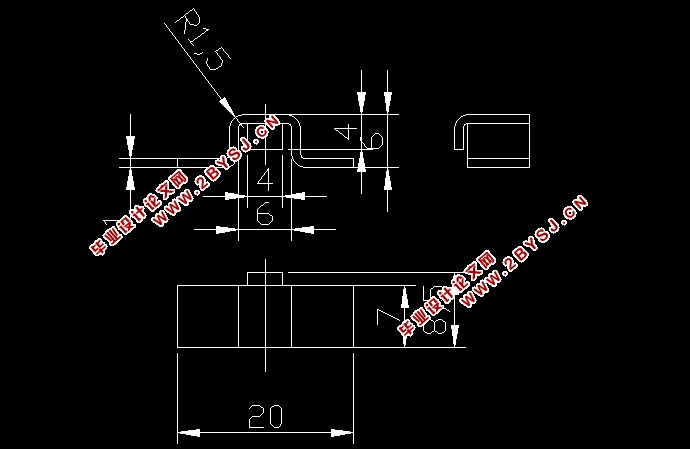
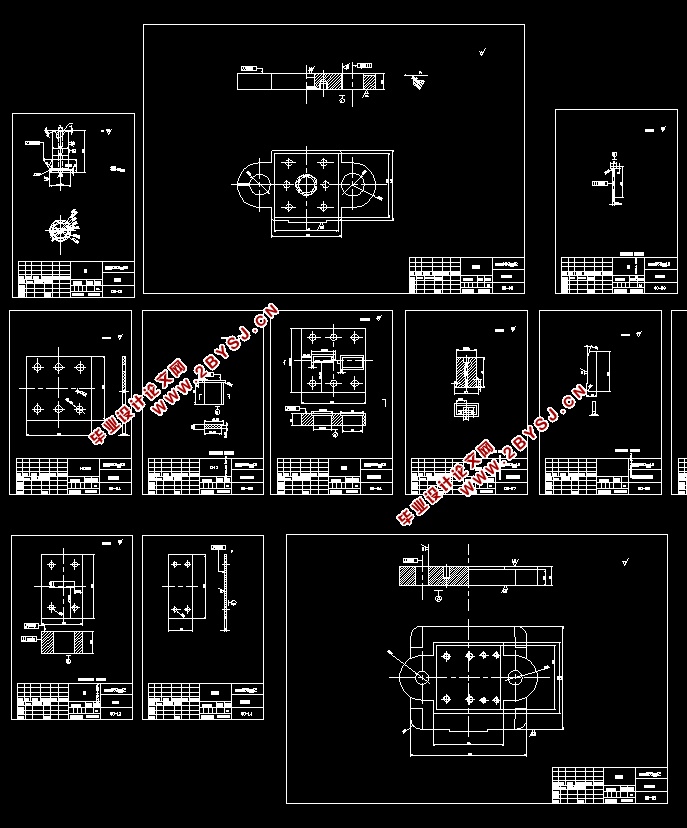
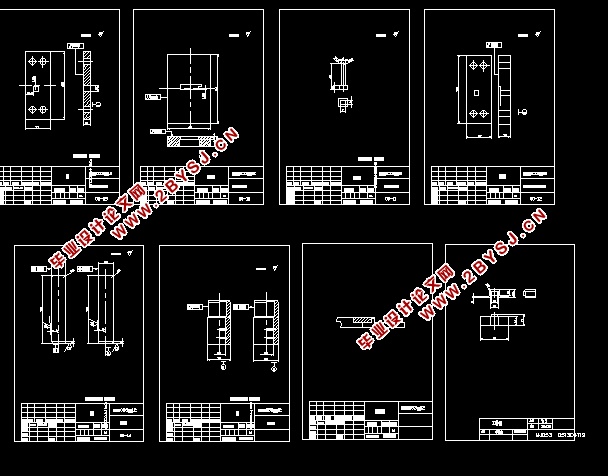
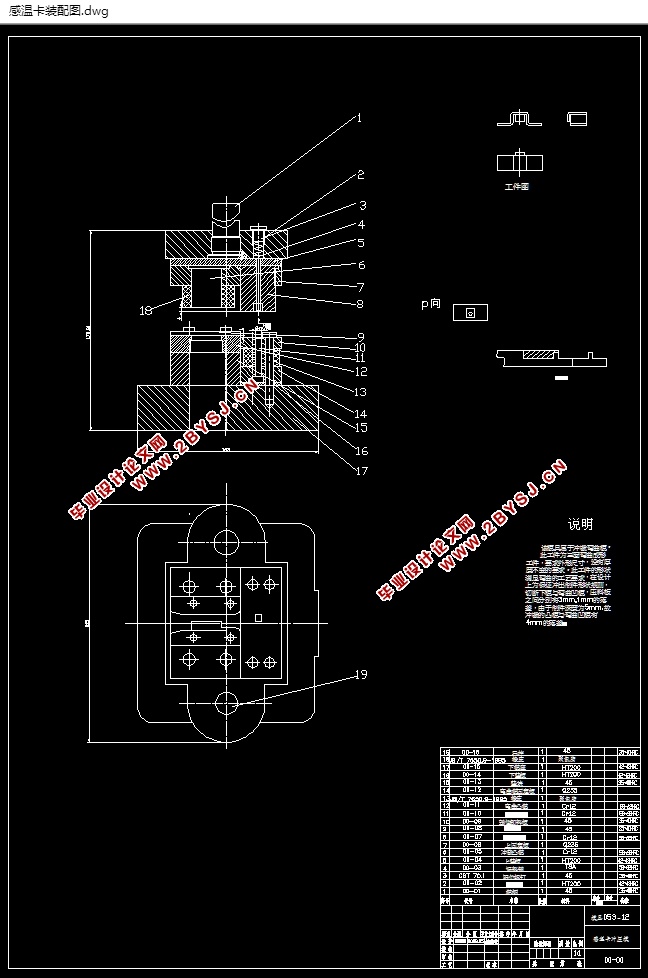
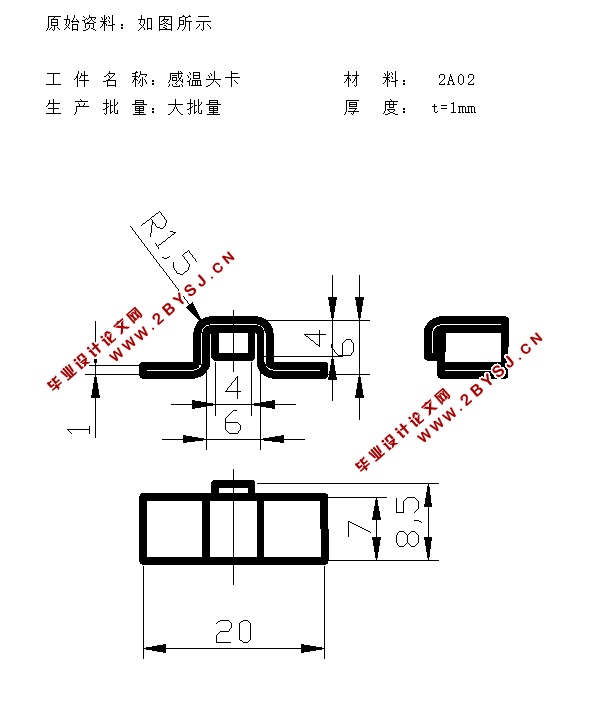
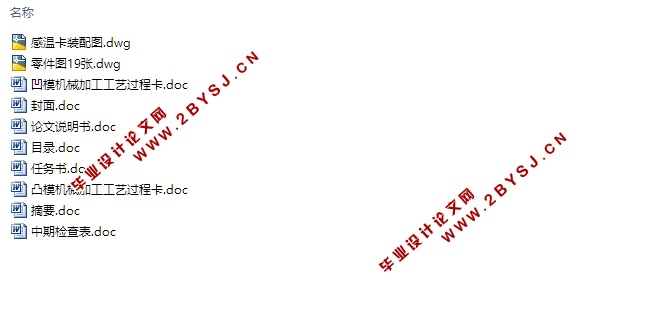
目 录
1 绪 论 1
1国内模具的现状和发展趋势 1
1.1.1国内模具的现状 1
1.1.2 国内模具的发展趋势 2
1.2 国外模具的现状和发展趋势 3
1.3 感温卡件模具设计与制造方面 5
1.3.1 感温卡模具设计的设计思路 5
1.3.2冲裁弯曲级进模具设计的进度 5
2 感温头卡冲压工艺的分析 6
2.2冲裁弯曲工艺计算和工艺方案 7
2.2.1 工艺方案的确定 7
2.2.2 计算毛坯尺寸 7
2.2.3确定是否用压边装置 8
2.2.4 画出工序图 9
2.2压力、压力中心计算及压力机的选用 9
2.3.1 压力计算与压力机的选用 13
2. 3.2 初选压力机 13
3 模具的结构设计 14
3.1 模具工作部分的计算与设计 14
3.1.1 冲裁模的计算: 14
3.1.2 弯曲模的计算: 16
3.1.3 模具结构形式的选择与确定 17
3.1.4 选用模架、确定闭合高度及总体尺寸 17
3.2 模具零件的结构设计 17
3.2.1 弯曲凹模 17
3.2.2 退料销 18
3.2.3 橡皮圈 18
3.2.4 导柱、导套 19
3.2.5 其他零件 19
3.3 模具总装图 20
4 模具类型的选择 21
4.1 具体结构选择 21
3.2 定位方式的选择 22
3.3 出件方式的设计 22
5 压力机的参数与校核 22
6 结束语 24
致 谢 26
参考文献 27
